Tiger Safari in India: Best Time, Top Reserves & Booking Guide (2025)
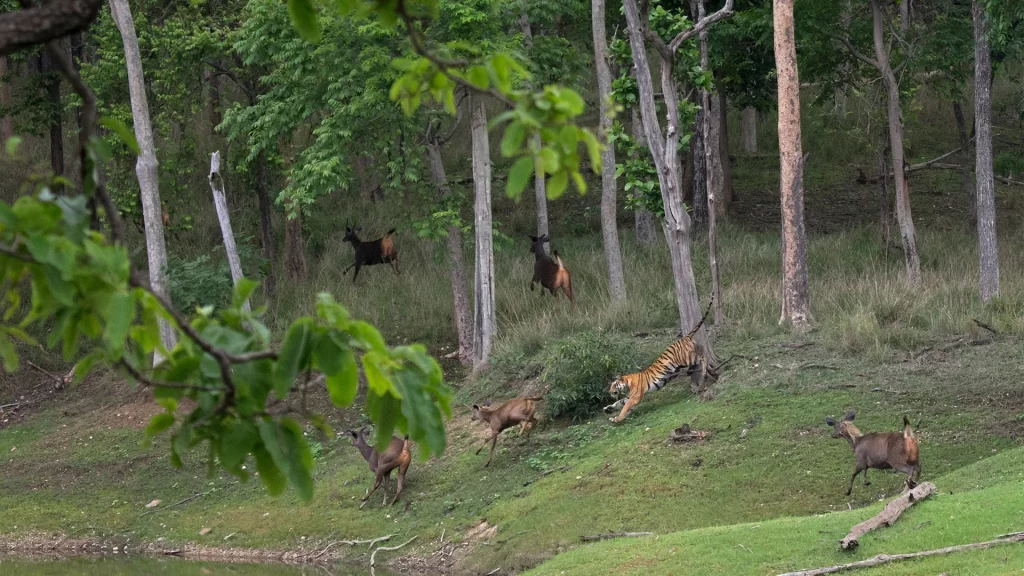
A tiger safari in India is more than just a holiday—it’s a once-in-a-lifetime adventure into the wild. With over 50 tiger reserves spread across forests, grasslands, and river valleys, India is home to nearly 75% of the world’s Bengal tigers, making it the ultimate destination for wildlife enthusiasts. But spotting a tiger in its natural habitat isn’t just about luck. It requires careful planning—choosing the right season, the right reserve, and the right operator. Done right, your safari can transform into an unforgettable wildlife experience; done wrong, it may leave you disappointed. In this guide, we’ll cover everything you need to know before booking your tiger safari in India: the best times to visit, top tiger reserves, permit and cost details, and expert tips to make your journey truly memorable. Why Timing Matters When Planning a Tiger Safari in India You must know the best time for a tiger safari if you want to see one or several at a time. Otherwise, a certain Indian tiger safari booking might disappoint you if you visit and see one. However, don’t worry about not spotting a tiger during your visit. Tiger reserves in India, including specific core or buffer zones are closed during specific seasons like the monsoon. It’s not like tigers don’t come out during the monsoon season. They are wild animals; any season works for them. However, they become easily camouflaged in the thick bushes and trees grown plentifully under the influence of rains. Furthermore, heavy rains and floods can damage the existing tracks in a forest. So, if you visit during the monsoon, you can’t walk without slipping or tripping, and jeeps or canters can’t easily navigate the wet ground. Also, tigers are not as visible when it rains. You can’t see them as much with binoculars when they are sitting relaxed behind bushes. That is why timing matters for tiger sightings, which is between October to June. Avoid tiger safari bookings between July and September during any year in India. The Best Seasons to Book an Indian Tiger Safari Tiger reserves in India offer you specific seasons to visit. So, make you book an Indian tiger safari based on the season you prefer. What’s the best season for an Indian tiger safari? When the Monsoon Recedes: October to November: The tiger reserves in India mostly open after the monsoon has left the forest. So, these months from October to November are post-monsoon tiger safari times when the landscapes are lush green and vegetation is at its peak. Why you may not want to do post-monsoon: We do recommend carrying mosquito repellent as the coast is not quite cleared from them. The tracks are still de-structured due to heavy rains, and the soil is probably eroded. While the season is cool and welcoming, the travel to these tiger safari is not quite favourable. When Summer Sets In: March to June: Summer offers the best months to find tigers out in the open making ways to stay hydrated. Book an Indian Tiger Safari in the early mornings or the late evenings. These are the best parts of the day where you can see them, plus the heat is slightly less daunting. Why you may not want to do summer tiger safari: It gets hotter during these months, so unless you can take the heat, don’t go for a tiger safari. If you are not used to the scorching heat, you can suffer from a heat stroke and migraines, especially those who get headaches easily. Sunburns are naturally going to occur even if you use effective sunscreens. The Winter Says Hi: November to February: Saving the best for the last as Tiger Reserves in India offer these seasons as the best time of the year. It’s cooler, easy on the environment, and only requires you to stay moisturised. Tigers love to walk up to waterholes to stay hydrated from the dry winter season, so they are out from hiding. You are most likely to see them without hassle, mosquitoes, or the heat. Why you may not want to do a winter tiger safari: You do see tigers during the winter months, but not as frequently as the summer months. To put it simply, you can spot one or two tigers, but not together in threes or fours like during summer. They like to disperse during the winters, making it slightly harder to spot them. Top Tiger Reserves in India for Safari Adventures India has over 50 tiger reserves, but some are world-famous for frequent sightings and stunning landscapes. Tiger Reserve State Highlights 1. Ranthambore National Park Rajasthan Famous for tigers in open grasslands & forts 2. Bandhavgarh Tiger Reserve Madhya Pradesh Highest density of tigers in India 3. Kanha National Park Madhya Pradesh Inspiration for The Jungle Book 4. Jim Corbett National Park Uttarakhand India’s first national park, river safaris 5. Tadoba Andhari Tiger Reserve Maharashtra Excellent tiger sightings year-round 6. Sundarbans West Bengal Unique mangrove habitat, elusive swimming tigers If you want higher chances of tiger encounters, choose Bandhavgarh, Ranthambore, or Tadoba Tiger Reserves. How to Plan Your Tiger Safari in India with the Right Operator What if you wanted to visit one of the most awaited tiger reserves in India? You book an Indian tiger safari, get your accommodation fixed, and arrange all the necessary permits. However, you missed out on booking the jeep tour guide or didn’t get the necessary permits arranged. You need a safari tour planner by your side to get the best experience at a tiger reserve. We offers professional Wildlife tour packages for the time when you book an Indian tiger safari. We specialise in personalising your experiences in any one of the tiger reserves in India that you chose to visit. Provide you with the knowledge of every wildlife safari based on the travel routes, destination, and how one tiger reserve is different from the other. We will manage your stay in luxurious wildlife resorts. Help you with accommodations most suited to
Top Things to Do in Nainital: Unforgettable Adventures Await
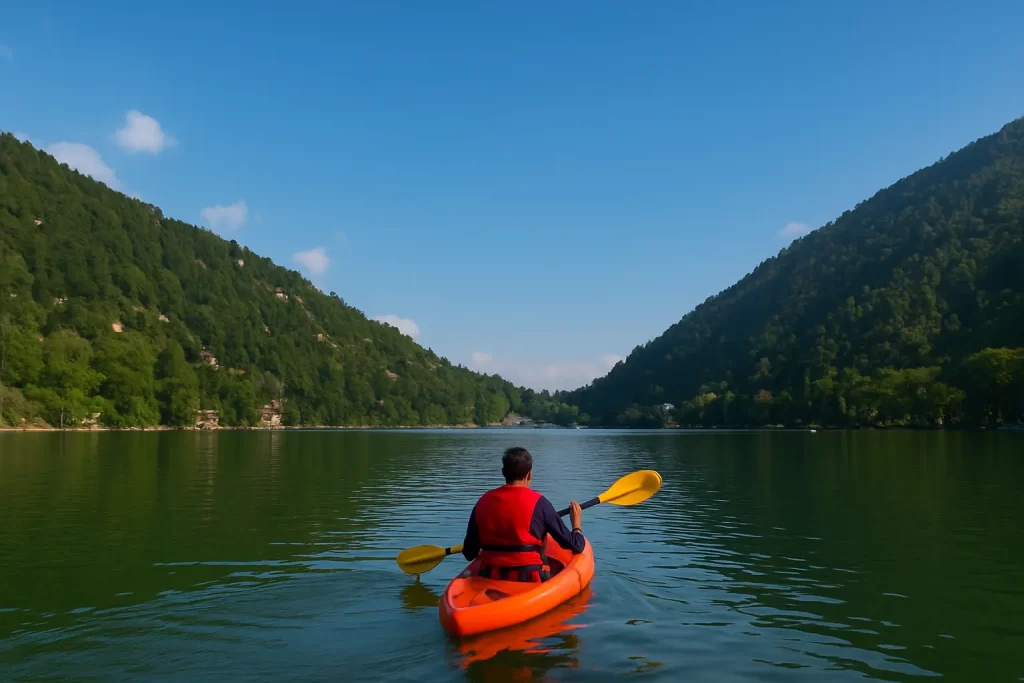
Activities near Nainital resorts are not just adventurous, they’re memorable. While you look at the photos you clicked during your trip, you will realise what’s missing. Your heart was stolen! It was paraglided by Nainital with no promise of a return. So, what can you do in this scenic city of lakes? Let’s find out the amazing things to do in Nainital! Why Nainital is a Must-Visit Adventure Destination Some of the things to do near Nainital resorts are sightseeing, taking walking tours, kayaking, boating, paragliding, etc. Nainital is not just a Himalayan Resort Town; it offers so much more, in fact, beyond its region. This is why we encourage you to explore the activities near Nainital resorts. The district brims with adventure, including: Kayaking and paddle boating Hiking and Trekking, from the Snow View hill to Cheana Peak Paragliding Hot-air Ballooning at Sukhatal Visit the Nainital Zoo Visit the annual Golf tournaments Apart from the adventure that awaits, it’s also a great place to visit during the summer season. It’s not as hot compared to other cities like Mumbai or Delhi. The summers from March to June have warm days indeed, but cool nights with temperatures ranging from 10 to 27 degrees Celsius. These months mark a pleasant time for Nainital Tourism, where people can come, breathe in the fresh air and absorb nature at its finest. While the adventures we mentioned are fun to experience, let’s explore them further. There’s still an activity in this city of lakes that we haven’t spoken of yet. It’s coming now! Top Things to Do in Nainital: Adventure Activities Near Resorts There’s a bonus adventure activity that will blow your mind. Your trip to Nainital will leave you missing it when you go back home. So, brace yourselves for the adventurous activities near Nainital Resorts. 1. Boating and Kayaking on Naini Lake & Naukuchiatal The Naukuchiatal lake is a bit away, around 25 km from Nainital. Prepare for bird-watching and angling, along with yachting, paddling, and rowing. This one will be an unforgettable experience. We suggest that while you are at this lake to enjoy the scenery more than selfies! Naini Lake will also win your heart as it is crystal clear, and it is overlooked by hills and snowy peaks. Did you want boating and other water sports as activities near Nainital Resorts? Get to this lake and you won’t be disappointed with the quality of water sports here. 2. Trekking and Hiking – Classic Things to Do in Nainital Hills Go trekking through the Ayarpatta hills to reach what is called the Tiffin Top. A well-established trekking route is the Naini or Cheana Peak, while others include the Guano Hills and the Snow View Point. 3. Paragliding Over the Valleys In case you’ve never done paragliding before, put it on your list as one of the best activities near Nainital Resorts. Unless you are afraid of heights, enjoy the gorgeous valleys beneath you as your feet find no grounds to dislike this fun experience. Don’t forget the lake’s vast and crystal clear shine, while the snow-capped mountains blow a gentle breeze at you. Bhimtal and Naukuchiatal are tourist spots that offer you this fun forever activity. 4. Camping in Nainital Hills Be one with nature at the Lake View Nature Camp or the Hidden Valley Camp. Other campsites where you can experience uniqueness are the Moksham Himalayan Campsite, Camp Hornbill in the Sitabani forest reserve, etc. The camping cost in Nainital starts from Rs 1500 per person per night if you are staying at a resort nearby. So, the range may be between Rs 1500 to Rs 4000 and might include luxury tents, warm meals and beverages for the best comfort. 5. Tiger Safari at Jim Corbett National Park – One of the Best Things to Do Near Nainital Welcome to the bonus adventure point, where you can witness wildlife near Nainital. One of the even better than paragliding activities near Nainital Resorts is the Jim Corbett National Park. The hub of tigers and wild animals, this wildlife sanctuary will leave you spellbound. You can stay at the Nainital Willows, which is just two hours away from Jim Corbett. Planning Your Trip to Experience the Best Things to Do in Nainital It’s important to plan your stay in Nainital, especially if you are looking forward to all the above adventures. Make sure to book everything in advance as best you can, more importantly, the Jim Corbett Tiger Safari. Wildlife safaris require additional precautions and requirements such as necessary permits, your valid ID card, hiring a private guide, and wearing neutral-shaded clothing, among many other measures. Plan your entire itinerary for your trip, as it will help you iron out all the arrangements required from your end. You must also choose the nearest resorts if you want to get to this national park. That is, after you’ve witnessed and enjoyed all the adventurous activities near Nainital resorts. If you do not have your vehicle, you can always use public transport or hire a local taxi. If you are visiting during the summer, it won’t get too hot, but you shouldn’t forget your sunglasses. Pack in additional layers if you are visiting during the winter, as it can get extremely chilly in this beautiful hill station. Make sure that the resort you book has all the amenities to make your stay more memorable. Why Stay at Nainital Willows During Your Adventure Trip? We recommend you stay at the Nainital Willows, keeping closer to this tiger reserve. This resort is based within the region of the Lake District, and is a smooth ride away from the Jim Corbett National Park. It offers a lake-facing view with a parking facility for seven vehicles. You can get personalised services here as well, from assisted sightseeing to various travel packages. Nainital Willows is a great place to stay as the rooms are spacious, and it gives you a chance to explore the best tourist spots
Tiger Conservation in Tadoba: Remarkable Ways to Save Bengals
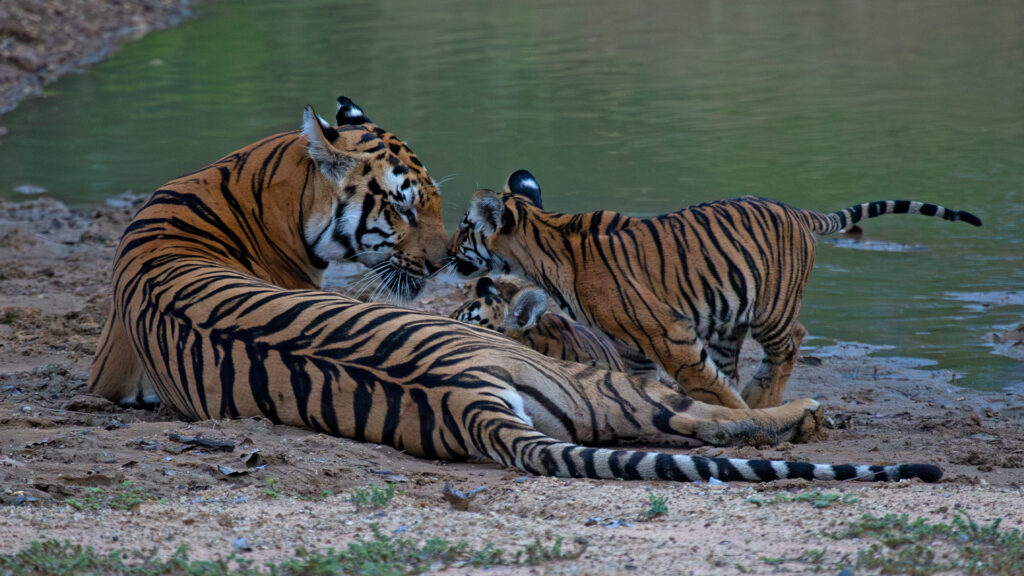
Tadoba has a story that surprises many. Once known as a hunting ground, it has now turned into one of the strongest examples of tiger conservation in India. Often called the Jewel of Vidarbha, this reserve is not only about spotting the Royal Bengal Tiger but also about witnessing how people, forest staff, and nature lovers came together to protect wildlife. From the calm Tadoba Lake to the deep green forests and valleys, every corner here tells the journey of Tiger Conservation in Tadoba. Evolution of Conservation in Tadoba Amid the dense volume of this reserve, Tadoba has an interesting history to it between 1000 BC and 1879 AD. The tribal people lived in Tadoba for hundreds of years. Living in perfect harmony with the wildlife, there came a time when the chief of the village, Taru, was attacked and killed by a tiger. The subjects of his tribe built a memorial in honour of the village chief near Tadoba lake. The Britishers then occupied Tadoba between 1879 and 1935. This period witnessed Tadoba turning into a resource extraction forest where wildlife hunting was also carried but it went unchecked. Finally, tiger shooting was banned in 1905, excluding those who had special permits to carry out hunting. Further strict restrictions on hunting animals were applied in 1931, which marked a significant establishment of conservation efforts. By 1935, the Tadoba region was established as a wildlife sanctuary to address the ecological concerns. Also, to work on the alarming reduction in the tiger population, such as the endangered species of the Royal Bengal Tiger. However, due to continued illegal hunting, the Tadoba National Park was formed in 1955 for Tiger Conservation in Tadoba. Conservation Strategies implemented Innovative efforts were introduced after the Tadoba Andhari Tiger Reserve was formed. Anti-poaching patrols were sharpened. Habitat management programs were established. Local communities were educated on the significance of wildlife preservation. As a result, the tiger population gradually increased, giving positive results to the overall ecological system. The matter of fact is that poaching and hunting of tigers continues to remain a challenge. Therefore, more measures are applied more strictly to improve tiger conservation in Tadoba, such as: Anti-poaching measures Forest rangers continue to keep a check by travelling through the region daily. Addition of surveillance cameras to identify and catch potential poachers and hunters in the Tadoba forest. Trained dogs are deployed to track and identify potential poachers. A special task force is assigned to investigate and bring poaching crimes to justice. The reserve’s habitat restoration Reforestation to enhance the forest’s volume and density, which is essential for the survival of tigers. Maintaining an appropriate environment to enhance the thriving state of the tigers. Water conservation Actionable steps for land restoration Public awareness Local communities are encouraged to take part in the conservation efforts. This includes making sure that the communities understand the need for tiger protection and how to live harmoniously with this wildlife wonder. Biodiversity and Ecosystem of Tadoba The natural habitat of this reserve contributes to the rich biodiversity, and it is what magnetises Tadoba tourism. Let’s explore this ecosystem to understand what makes it one of the best Maharashtra Wildlife reserves among others. The Tadoba Andhari Tiger Reserve encompasses densely occupied forests, water bodies, and grasslands. It is a safe space for tigers, sloth bears, leopards, Indian bison, wild dogs, deer, antelopes, and 200+ bird species, including the endangered Indian vulture. Balancing Tadoba Tourism with Tiger Conservation in Tadoba, India Relevant measures are taken to ensure that tiger conservation in Tadoba is maintained at its peak. This includes trained naturalist guides, limited entry permits, and strict safari rules that assist in maintaining the reserve’s integrity. These measures ensure that the safari visitors can enjoy the beauty of the wildlife around them. At the same time, everyone respects the significance of the ecosystem. This is because, beyond the Royal Bengal Tiger, this national park is known for its endangered species and rare ones too, such as the Indian Giant Squirrel and Indian Pangolin. The Tadoba Andhari Tiger Reserve is also a must-visit due to its scenic beauty and the weather. Firstly, the lakes here bring a calm and peaceful aura to the place, which are the Andhari River, the Tadoba Lake, and the Kolsa Lake. Secondly, the weather is clear most of the time, rising above 40 degrees Celsius with minimal rain. So, safari visits here are easier as long as you carry the necessary items to protect yourself from the heat. That said, with the warm days come cool nights as temperatures drop below 10–15 degrees Celsius during winter, making the experience of Tiger Conservation in Tadoba even more memorable. Successes and Ongoing Challenges in Tiger Conservation Maintaining tiger conservation in Tadoba has seen an uphill success, although it is not shy of its challenges. The forest has witnessed human-wildlife conflict, habitat degradation, and poaching. While there continue to be threats, the measures taken have ensured plant and wildlife preservation at its highest. Some of the key milestones this reserve has seen include: 1955: The Tadoba National Park was founded 1995: Combining the Andhari Wildlife Sanctuary and the Tadoba National Park to make the Tadoba Andhari Tiger Reserve 2007: Securing modern safari amenities, trained naturalist guides, and manned entry points. 2010s: Executing online Tadoba safari booking to increase global tourist accessibility Through these years, the reserve has successfully crossed major finish lines: Gradual growth of the tiger population in Tadoba by overcoming poaching and hunting. Revenue from Tadoba Tourism has fueled the conservation of tigers, wildlife, and community development. Tourists remained educated about their responsibility towards their visit, reducing any major impact on the environment. Iconic Tigers of Tadoba: Symbols of Conservation The Royal Bengal Tiger stands to be a dazzling beast of its kind. However, apart from this magnificent creature stand other iconic tigers as well, such as the: Maya – Queen of Tadoba: Spotted in Navegaon and Kolara ranges, Maya is popularly known as the Queen of Tadoba. Gabbar
Why Tadoba Tiger Reserve Safari is the Best in India (and the Mistakes to Avoid!)
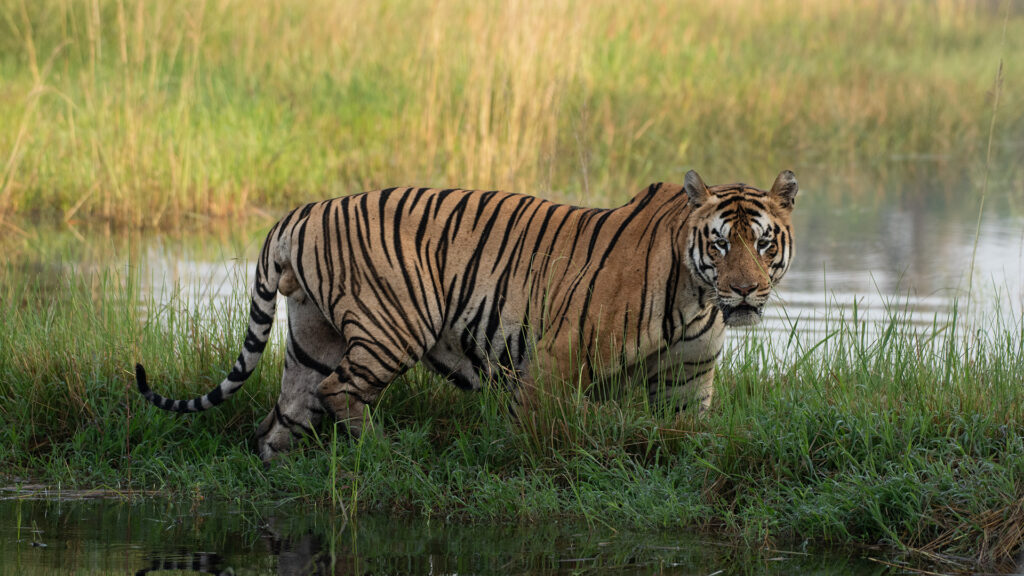
Not everyone has the privilege of randomly watching a wild cat walk by while sitting comfortably in a jeep. But the Tadoba Tiger Reserve gives you several chances to enjoy watching a tiger in all its glory. If you plan on exploring the wild, the best Tiger Reserve in India is waiting for you. Want to know why? Let the adventure begin! Tiger Sightings at Tadoba Tiger Reserve Safari – Why it’s the Best in India Until recently, tiger sightings were no-holds-barred. However, keeping in mind the ecological system and the safety of wildlife, officials have limited daily entries. Prepare to have your breath taken away by the beauty of the greenery and wildlife of the oldest and largest Tadoba Tiger Reserve in Maharashtra. The people of Tadoba consider the tigers here as divine beings who are protectors of the forest and who also contribute to their livelihood through employment. Famous Tigers of Tadoba Tiger Reserve Safari – Meet Mowgli, Choti Madhu & Bijlee These fiery-eyed royal beasts offer their unique personality to the locals and tourists. Mowgli – The Pride of Tadoba Mowgli is a beautiful male tiger born to Gangaram and Kuwani. He has two siblings, Paras and a sister. Choti Madhu – Queen of Moharli Zone Choti Madhu, queen of the Moharli zone, is a female tiger. She is easily identifiable by the M mark above her right eye. Bijlee – Expanding Her Territory Bijlee is among the popular tigresses who has expanded her territory in the forest, and has a male cub from her mate, Yuvraj. World-Class Safari Experience at Tadoba: Jeep, Canter, and Night Safaris You can explore the wild either by Jeep or Canter Safaris, day or night. Not more than six people can go for the jeep safari that costs Rs 5000 per person. The Canter Safari (2.5 hours) can take up to 18 people who pay Rs 800 per seat. At the same time, the night safari is for those who would love to browse through the silent wilderness of a jungle. The Night safari can take place in private jeeps or as a group. For those planning overnight stays at the reserve, the Machan at the Wildcat Resort Tadoba is the best place to pick. The machans are accommodations strategically built across the buffer zones. For overnight stays, Tadoba Safari Stay offer unique accommodations in buffer zones. Like every wildlife national park, the Tadoba Tiger Reserve has a core and buffer zone too. The buffer zone is where visitors can flexibly explore the forest. However, the core zones are where key areas where human visits are not allowed unless the safaris are booked in advance. The core is where wildlife is at its highest, and must therefore not be disturbed by overwhelming human activities. The core zones include the following gates: Moharli Zone – Best for Tiger Sightings Khutwanda Gate Moharli Gate – Tigers, Leopards, Sloth Bears Tadoba Zone – Landscapes & Tigers Kolara Gate – Tigers, Indian Rollers, Spotted Deer Navegaon Gate – Indian Gaurs, Sloth Bears, Wild Dogs Kolsa Zone – Wildlife & Forest Views Pangadi Gate Zari Gate – Wild Dogs, Leopards, Barking Deer Rules and Guidelines for Visitors to Tadoba Tiger Reserve Safari and Tiger Sightings Listen to what the guide recommends and instructs before and during the safari. Wear attire that is comfortable based on the weather and the right footwear. Make sure not to wear bright, shaded clothing. Always keep your valid ID proof with you, including the Safari permit that was given to you. Respect the space animals need from humans. While using your cameras, do not use flash photography. Do not smoke or throw food wrappers and other waste in the forest. Do not make very loud sounds or quick hand movements that may trouble the animals around. How to Reach Tadoba Tiger Reserve Safari – Road, Rail & Air The Tadoba Tiger Reserve has been made extremely easy to visit. The park is 140 km away from the Dr. Babasaheb Ambedkar International Airport in Nagpur. Flights are available if you are visiting from outside Maharashtra. Alternatively, you can travel by train or by road as well. By road from Nagpur to Tadoba, it may cost you Rs 1100 to Rs 1700 with a drive time of around 2 hours. It’s easy to travel by train as well, where you can arrive at the Chandrapur Station. Then take a taxi or a bus to go to the Moharli gate. While you book your Safari at Tadoba, don’t forget to book accommodation as well. Remember to only stay at green-listed resorts that comply with forest and wildlife conservation regulations. Some of them are listed below: Bamboo Tree Resort Tadoba Safari Stay Resort Singh Estate Resort Tadoba Tiger King Resort Swaswara Resort Red Earth Resort Taruvan Resort You may get access to restaurant services, indoor games, jungle or tiger safaris, a kids’ play area, a bonfire, and so on. Higher-priced resorts may also offer swimming pool facilities, a lounge, bar, free parking, paid airport transfers, laundry service, free Wi-Fi, etc. To ensure you spot a tiger or two, and more, plan your Tadoba online booking between March and May. It is quite hot during these months, which makes the animals come out, increasing the likelihood to spot them easily. However, for a pleasant safari experience, visit the park in the winter season between November and February. Tips for Planning Your Tadoba Tiger Reserve Safari Tadoba Tiger Reserve Safari Booking & Planning Tips Which months are you comfortable visiting the Tadoba Tiger Reserve? Consider the factors like the weather most suited to your liking, while also understanding the frequency of wildlife sightings. Make sure you are booking three to four months before visiting the park. Once you’ve picked a month to visit, make sure you book the zone where you want to do Tadoba tiger reserve safaris. You could book multiple zones as well, with a combination of core and buffer zones. However, many visitors
Plan Your Indian Tiger Safari: Top Months and Easy Booking Tips
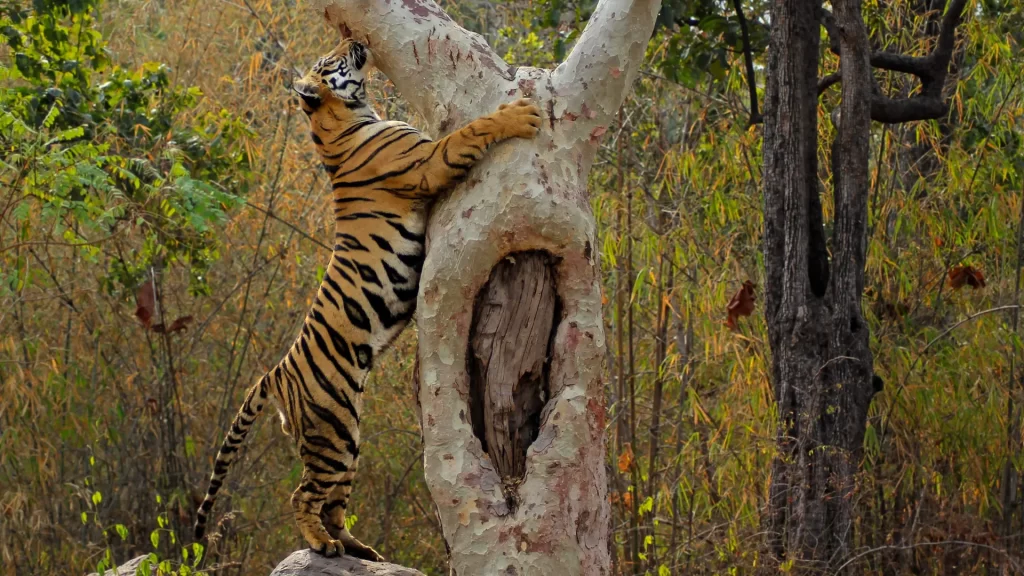
There are plenty of tiger reserves in India, making a Tiger Reserve in India a top destination for wildlife enthusiasts, so it’s not too challenging to find one and book an adventure for an Indian Tiger Safari. However, to book an Indian Tiger Safari, you have to factor in the season, the booking cost, the tour planner, and so on. In this blog, we will explore the significance of timing, planning, and tips for when you book an Indian Tiger Safari at a Tiger Reserve in India. Why Timing Matters for Tiger Sightings on an Indian Tiger Safari You must know the best time to visit a Tiger Reserve in India for a tiger safari. Otherwise, a certain Indian tiger safari booking might disappoint you if you visit and see one. However, don’t worry about not spotting a tiger during your visit. Also, keep in mind that many tiger reserves in India, especially certain core and buffer zones, remain closed during specific seasons like the monsoon. It’s not like tigers don’t come out during the monsoon season. They are wild animals; any season works for them. However, they become easily camouflaged in the thick bushes and trees grown plentifully under the influence of rains. Furthermore, heavy rains and floods can damage the existing tracks in a forest. So, if you visit during the monsoon, you can’t walk without slipping or tripping, and jeeps or canters can’t easily navigate the wet ground. Also, tigers are not as visible when it rains. You can’t see them as much with binoculars when they are sitting relaxed behind bushes. That is why timing matters for tiger sightings, which is between October to June. Avoid tiger safari bookings between July and September during any year in India. The Best Seasons to Book an Indian Tiger Safari Tiger reserves in India offer specific seasons for visiting, so make sure you book your Indian tiger safari at a tiger reserve in India during the season you prefer for a memorable wildlife safari in India. What’s the best season for an Indian tiger safari? When the Monsoon Recedes: October to November: The tiger reserves in India mostly open after the monsoon has left the forest. So, these months from October to November are post-monsoon tiger safari times when the landscapes are lush green and vegetation is at its peak. Why you may not want to do post-monsoon: We do recommend carrying mosquito repellent as the coast is not quite cleared from them. The tracks are still de-structured due to heavy rains, and the soil is probably eroded. While the season is cool and welcoming, the travel to these tiger safari is not quite favourable. When Summer Sets In: March to June Summer offers the best months to find tigers out in the open making ways to stay hydrated. Book an Indian Tiger Safari in the early mornings or the late evenings. These are the best parts of the day where you can see them, plus the heat is slightly less daunting. Why you may not want to do summer tiger safari: It gets hotter during these months, so unless you can take the heat, don’t go for a tiger safari. If you are not used to the scorching heat, you can suffer from a heat stroke and migraines, especially those who get headaches easily. Sunburns are naturally going to occur even if you use effective sunscreens. The Winter Says Hi: November to February The best time for tiger safari in winter as Tiger Reserves in India offer these seasons as the best time of the year. It’s cooler, easy on the environment, and only requires you to stay moisturised. Tigers love to walk up to waterholes to stay hydrated from the dry winter season, so they are out from hiding. You are most likely to see them without hassle, mosquitoes, or the heat. Why you may not want to do a winter tiger safari: You do see tigers during the winter months, but not as frequently as the summer months. To put it simply, you can spot one or two tigers, but not together in threes or fours like during summer. They like to disperse during the winters, making it slightly harder to spot them. Planning Your Indian Tiger Safari with the Best Safari Tours Planner What if you wanted to visit one of the most awaited tiger reserves in India? You book an Indian tiger safari at a top reserve, get your accommodation fixed, and arrange all the necessary permits. However, you missed out on booking the jeep tour guide or didn’t get the necessary permits arranged. You need a safari tour planner by your side to get the best experience at a tiger reserve. Indian Tiger Safari offers professional tour packages for the time when you book an Indian tiger safari. We specialise in personalising your experiences in any one of the tiger reserves in India that you chose to visit. Provide you with the knowledge of every wildlife safari in India, based on the travel routes, destinations, and how one tiger reserve is different from another. We will manage your stay in luxurious wildlife resorts. Help you with accommodations most suited to you, your family, and friends. Make sure you get to enjoy comfort at a reasonably priced stay. Assist you in selecting the safari type through jeep, canter, or boat, based on the reserve you choose, and other key aspects. Help you get all the necessary permits arranged and collected. Customise your itinerary based on your idea of an adventurous journey and making every moment memorable. When you are booking a safari with Indian Tiger Safaris, you can choose from among nine different national parks. This way, you can pack your camera and other essential items while we organise the best tiger safari adventure on your behalf. Tips for Booking your Indian Tiger Safari at the Right Time Not much of a planner? We’ve got your back to learn how to book an
Sundarbans Luxury Resorts: Where to Stay Near the Tiger Reserve
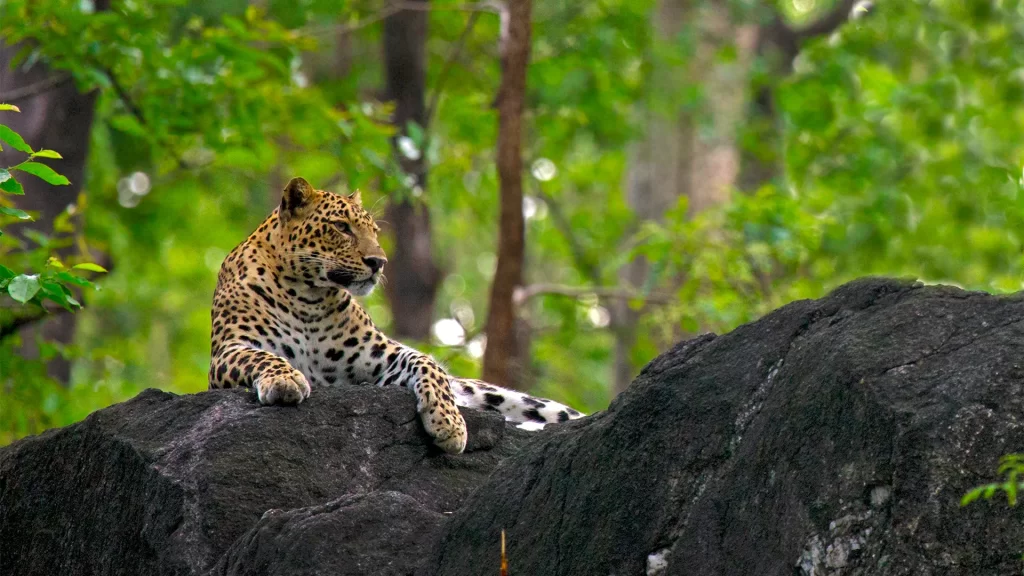
Have you booked your tiger safari at the Amazon of the East? It’s time to book your accommodation at one of the Sundarbans luxury resorts. Imagine walking out onto your balcony at the Sundarbans accommodation only to find the beauty of nature welcoming you. In this blog, we will explore luxury hotels in Sundarbans. Why Choose a Luxury Resort in Sundarbans? If you want an equally enriching experience in your safari and your stay, the Sundarbans luxury resorts are a given. These resorts are typically closer to the reserve. Also, nothing beats a nice royal shower after a nature-enriched day in the forest. However, above all of this, some of the striking amenities drive tourists to book the Sundarbans tour packages; let’s go through each of them! You can book among the options at the Sundarbans luxury resorts while choosing the type of tiger safari suited to you. Air-conditioned rooms Double bed European toilets Spacious dining hall Conference room for guests Travel desk Room service, laundry, pickup and drop Swimming pool Doctor on-call in case of healthcare requirements or medical emergencies Power backup Do note that these amenities are specific to the type of accommodation you select, from Deluxe rooms to family stays. Make sure you have the necessary permits given to you after booking the safari. You can also book a private guide to accompany you during the Sundarbans wildlife safari. Top Luxury Resorts Near Sundarbans Tiger Reserve It is essential to be on time for the safari you’ve booked. This is why you must look for the Sundarbans tiger safari hotels that are closer to the reserve. Some of the best resorts in Sundarbans include: 1. Sundarban Mangrove Retreat Eco-friendly resort located in Jamespore village. Modern furniture in 4 AC executive rooms, 8 AC cottages, and 10 non-AC huts. Avail the motorboat activity through the river cruise; four ponds for fishing activities. 2. Sundarban Jungle Camp One of the best resorts in Sundarbans at the Bali Island, offering a strategic location to admire the greenery around, including the fauna. Accommodation: Six mud cottages (mud walls, thatched roofs) for three people per cottage. Two bungalows for four people per bungalow with modern furnishings. Restaurant area, room service, travel desk, play area, parking, and generator backup. 3. Sundarban Tiger Camp Offers a luxury stay amid a peaceful ambience with exotic wildlife. Accommodation that provides wide spaces with extended balconies, encompassing 21 air-conditioned rooms and attached bathrooms. Rooms Tents Bamboo huts Cottages Bar for those who love to relax and unwind with a good drink. Amenities: Wi-Fi, conference hall, medical experts on-call, car rental, boat rental, souvenir shop, ironing board on request, travel desk, room service, and intercom. 4. Sundarban Riverside Holiday Resort This riverside resort covers six acres of land surrounded by mesmerising mangrove trees and fauna. 24 rooms welcoming all safari lovers and explorers – modern amenities, attached bathrooms, and classy interiors. Amenities: emergency medical services, room service, travel desk, parking, etc. 5. Sundarban Tiger Safari Resort You can arrive at the tiger safari resort from the Canning Railway Station. 12 Cottages comprising well-furnished rooms, comfortable beds, and attached bathrooms. Restaurant, parking, room service, pick up and drop services, doctor-on-call, and a power generator. 6. Sundarban Tiger Roar Resort 12 double-bed luxury rooms with attached bathrooms and European toilets. Spacious, air-conditioned rooms. A restaurant with Bengali and Chinese cuisine, with fresh fish and chicken from the local market. Amenities include laundry, water pool, doctor-on-call, room service, hair dryer, newspaper, room service, pick up & drop, and travel desk. These resorts are easily accessible from Calcutta airport, the Canning Railway Station, with the nearest town, Gosaba. What to expect from a luxury stay in Sundarbans Sundarbans luxury resorts add to the experience of a wildlife safari. These resorts are a breath of fresh air once you’ve spent the day or evening exploring the wild in open fields. The air-conditioned rooms, room services, and restaurants, apart from the other amenities, give you a sense of belonging. It’s not often that city people can adjust to the local tastes of living. This is where luxury hotels in Sundarbans play a significant role in setting the bar high. When you decide to take the Sundarbans wildlife safari tour, these luxury cottages and rooms are available for you to come, sit back, and relax. These Sundarbans accommodations are located in the middle of the mangrove forests, where you can revel in their natural glory. Have you ever opened your eyes to a forest of calm and serenity? How long has it been since you last woke up to the chirping of melodious birds? When was the last time you slept in the cradle of nature, where wild animals proved to be your divine spirits? Planning Your Sundarbans Resort Stay The best time to visit Sundarbans will depend on the day you wish to book Sundarbans accommodation. Although this national park is open throughout the year, you will find tourist visits highly from September to March. It’s a pleasant set of months where, not only tigers, but crocodiles come sit by the river banks as well. However, you must note that the summer season has the most tigers coming out into the open, seeking water bodies. Don’t worry about your stay because you will find the best Sundarbans tour packages to complete your safari experience. Sundarbans is not just a forest where you get to explore nature, but is a place where wildlife welcomes you with open arms. So, don’t wait any longer to book your stay at any of the Sundarbans luxury resorts. In conclusion, Sundarbans offers a luxury stay amid wildlife and the rest of nature. So, don’t hold back from the most amazing moments where you get to be one with wildlife. Make sure to book your visit and your accommodation in the months where tigers are most visible. They usually are not as visible during monsoon season, which is why you want to visit at a more favourable time.
Tadoba National Park vs Sundarban: Comparing India’s Best Tiger Reserves
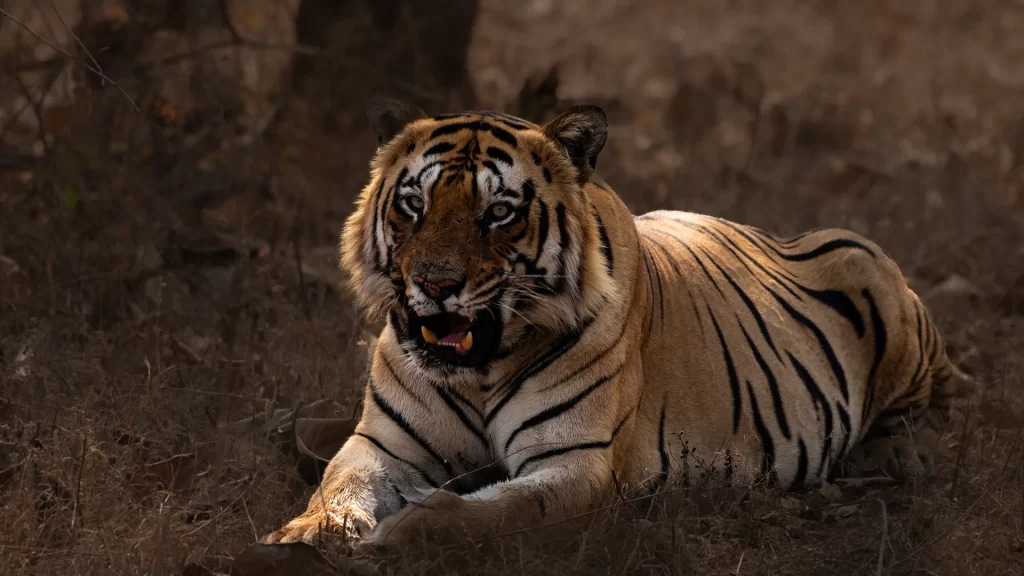
Are you on the lookout for the best tiger reserves in India? With so many options, it can be challenging to choose between them. But here’s an interesting way to decide: would you like to see a tiger walking on land or swimming in water? Let’s pick the first option and see what it has to offer. If you want to experience tigers on land, Tadoba National Park in Maharashtra is one of the best places to visit. In this guide, we’ll compare Tadoba National Park with Sundarban National Park, explain safari types, the best months to visit, how to reach, and share tips to plan your trip. Overview of the Tadoba Andhari Tiger Reserve Maharashtra is home to the largest safari park for tigers with forests that surround the wildlife. It has 90 tigers that you will find living peacefully, taking strolls, claiming their territory, or even hunting their prey along the grasslands and lakes. Apart from these regal wild cats, you will end up taking hundreds of photos of the cute sloth bears, dholes, and leopards. Also, you won’t be able to take your eyes off of the colourful birds that fly high above your heads. Want to venture through this forest? The Tadoba guides will assist you through jeeps or canter safaris through any of the six core gates or sixteen buffer gates. They also offer the Cruiser Safari which is like the Gypsy Safari that can take up to nine people on-board. Overview of the Sundarban National Park The Sundarban National Park Boat Safari is the hub of Royal Bengal Tigers, and is situated between India and Bangladesh, spread across 40,000 sq km. It stretches from the West Bengal Hooghly River in India to the Baleswar River in Bangladesh. This forest has 64 plant species that survive in brackish waters and saline flooding. It also has about 78 species of mangroves that play a significant role in the thriving of marine organisms. Apart from the flora, nothing beats this form of tiger spotting in India, as does the safari in this park. Here, you will see tigers, crocodiles, macaques, fishing cats, wild boars, flying foxes, and more. Tadoba National Park vs Sundarban: Safari Comparison If you are still unsure of picking the best tiger reserves in India, here’s a comparative list of both these parks. Features Tadoba National Park Safari Sundarban National Park Boat Safari Safari Styles Jeep Safari Boat Safari Duration to visit Depends on the package: Ranges between 2 Nights – 3 Days to 16 Nights – 17 Days. Timing 6.00 AM to 10.00 AM. 2.30 PM TO 6.30 PM. 8.30 AM to 4.30 PM. Boats are prohibited from entering after 6.30 PM. How to get there? You can arrive by train, air, or by road. You can arrive by train, air, road, or by jetty and boat rides. Group Size Jeep safaris – up to 6 people Canter safaris – 18-22 people 20 travellers on small boats 40-75 people on large boats Vibes Dense forest area, deep valleys, and smooth meadows. The air feels damp. You will hear the melodious singing of birds while riding the boat amid the mangrove forests. Wildlife and Tiger Spotting in Tadoba National Park One of the best tiger reserves in India is the Tadoba National Park, as it gives you the chance to take pictures of the magnificent Royal Bengal Tigers. They can be explored through jeep safaris in any of the three zones: Moharli Zone: Considered the best place to spot tigers! Tadoba Zone: The Tadoba Zone offers not just tiger sightings but also other wildlife animals. Kolsa Zone: Finally, the Kolsa Zone offers a great view of the forest landscapes. The chances of spotting tigers are comparatively low in this zone. How to Reach Tadoba National Park and Sundarbans Towards the Tadoba National Park, you can take the train, book a flight or travel by car. You must obtain permits from the park authorities, which are available online or at the entrance gates. You must have the permit and your original ID while entering the park. Make sure to do an advanced booking for your accommodation that is closer to the park. Pack essential items with you like sunscreens, binoculars, mosquito repellents, and so on. While planning to go to the Sundarbans, you can either go by road or a designated water route. You could also book or take the train, which offers different routes as well. Here, you are rarely going to be walking on land. You will be on boat rides most of the day, so carry necessary items like a charged phone, extra food and water. Take responsible care of your cameras and mobile phones, and other expensive and crucial items. Make sure to book a room in advance to stay near the safari park, especially during the peak season. Best Time and Season to Visit Tadoba National Park March to May are the ideal months to explore the Tadoba Tiger Reserve. This way you can avoid the summer, as it can get pretty hot and uncomfortable due to the tropical forest. Another great time would be between October and November. These months fall after the monsoon season, which makes it easier to explore the safari. Between November and March mark the best months to visit the Sundarban National Park. It’s when tigers are most visible. So, make sure to ride in the mangrove forest during these months. Which Tiger Safari Should You Choose – Tadoba or Sundarbans? If you would love to watch a tiger swim graciously across rivers, then the Sundarban National Park would be your best bet. However, if you love dry land and prefer witnessing tigers on land, then the Tadoba National Park jungle safari is your go-to. Tigers in the Sundarbans are known to be smaller in comparison. Studies reveal that they need less food, weighing lean animals of not more than 50 kg compared to the Gaur or Sambar. These tigers are known for their
Top 5 Jungle Safaris in India for 2025: Where to Spot Tigers and More
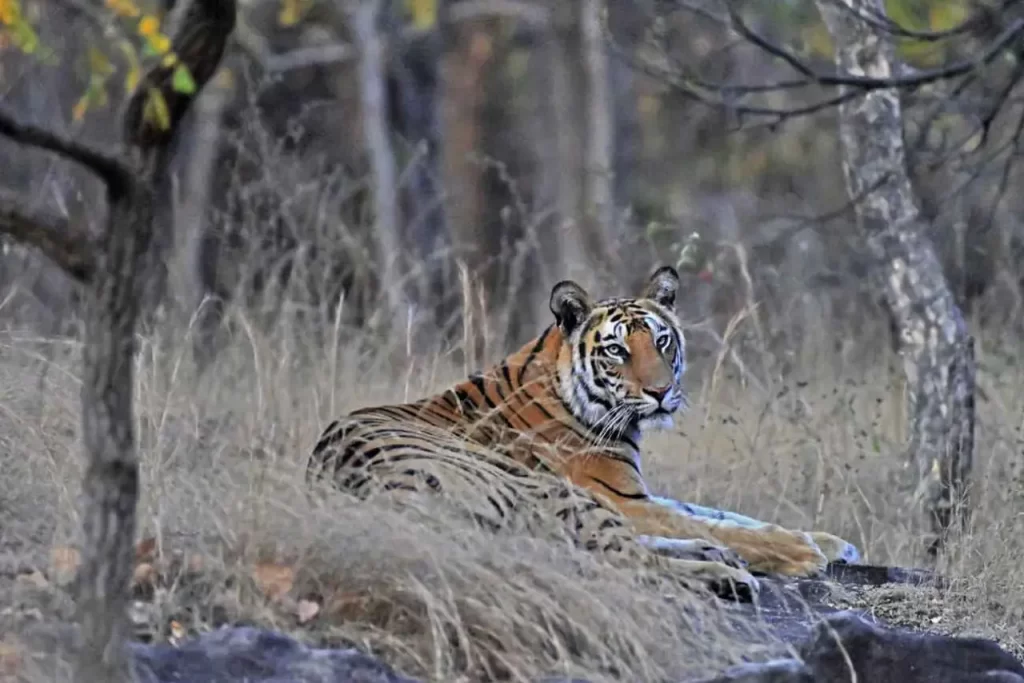
A jungle safari in India is one of the best trips you can take on a vacation. Exploring the wild, admiring the beauty of nature, and birdwatching! Need we say more? This year, you could plan to visit the best tiger safari in India, but which one could it be? Why India’s Jungle Safaris are a must-visit There are many tiger reserves in India, making a jungle safari in India a must-do experience. City life has grabbed one’s attention, enough to forget that it may be like being one with nature. A wildlife expedition, like a jungle safari, is a good way to explore the forest habitat that city life so easily makes one forget. You’ve seen in movies or documentaries, plunging high up against rocks or trees, or hunting a deer. But wildlife safaris give you the opportunity to see one or more in person. This physical proximity and experience will leave you in undeniable admiration of a wild cat so majestic. Top 5 Jungle Safari Destinations in India for 2025 Wildlife Safari, India, anyone? Yes, if you’ve been struggling to find the best tiger safari in India, we recommend you pause your search. It can get overwhelming to decide which is the best jungle safari in India that one can visit. The number of factors to consider, the month or week that aligns with your days off from work or the family’s schedule. If you’re going with friends, prepare to have the plan cancelled at least a dozen times before it is finally confirmed. While you can’t control all these factors, we can help you with a short list of the destinations to experience an unforgettable jungle safari in India. Whether you’re a solo traveller or with a group, these spots are perfect for exploring wildlife tour packages that include tiger safaris, local stays, and forest experiences. Let’s just cut down that search time and directly go through this list below: All you have to do is copy-paste this list and share it in your friends or family WhatsApp group to come to a unanimous decision. The top Jungle safari in India destinations are narrowed down, but how does anyone choose the best one? Tiger Safari Destinations in India: Facts You Should Know Let’s go a step further in understanding what each of these five jungle safaris offers: Destination / Distinguishing Factors History Highlights Safari Types Best Time to Visit Unique Features 1. Jim Corbett National Park Established in 1936 as Hailey National Park. Later renamed ‘Jim Corbett’ in 1957. 1. Divided into 8 different zones. 2. Over 600 bird species 3. The most popular zone to explore on an overnight stay is the Dhikala zone Jeep Safari, Elephant Safari, Canter Safari October to February Forest lodges, Food canteens,tiger safaris, elephant safaris 2. Kanha National Park Owned by the Gonds and the Baigas before the 19th century. 1862 – Official forest regulations were established. Declared as a reserve forest in 1879. 1. Divided into 8 zones. 2. Awarded the Best Tourism-Friendly National Park by the Department of Tourism. 3. Rudyard Kipling used this forest to inspire his story called ‘The Jungle Book’. 4. Explore tigers, birds, reptiles, and insects. Jeep Safari,Elephant Safari, October to March Easily spot tigers, sloth bears, barasingha, birds, wild dogs, etc. Offers morning, evening, and night safaris 3. Ranthambore National Park Named after Ranthambore Fort. The Jaipur royal members hunted tigers and wild animals. 1. Divided into 10 zones. 2. See Royal Bengal Tigers, leopards, hyenas, etc. 3. More than 300 bird species. 4. Diverse vegetation and fruit trees are available. Jeep or Canter, morning or evening shifts. November to March Three scenic lakes that are inhabited by crocodiles. Visit the Ranthambore Fort. High chances of tiger sightings due to the Golden Triangle Tour: Agra, Jaipur, and New Delhi. 4. Tadoba Andhari Tiger Reserve The Gonds and the Kolam tribes lived in this forest. The forest reserves were exploited during British colonisation. 1955 – declared a wildlife sanctuary. 1. Divided into 15 zones. 2. Scenic lakes in the buffer zones: Tadoba Lake, Telia Lake, etc. 3. Thick forest and deep valleys, perfect to click and save! Jeep and Canter Safari From March to June, October to February Can spot tigers, sloth bears, wild dogs, and native woodland bird species. Different types of tiger safaris are available from the weekend gateway to the Taj with Tiger Tracks. 5. Sundarbans National Park Dated in 200-300 AD, leased during the Mughal era. Later, the settlements were taken over by the 17th-century Portuguese and salt smugglers. Declared as reserved in 1875. 1. Divided into three hydrological zones: brackish, moderately saline and saline. These zones cover the core and buffer zones accordingly. 2. Known for its plant life, including the wild animals that reside in this national reserve. 3. The largest mangrove forests to explore in this jungle safari in India. Boat safari November to March Tigers take frequent dips as the Sundarbans is a low-lying island. Rich marine life, including crocodiles, crabs, and other aquatic life. Which is the Right Safari Destination for You? Now that you have a prepared list of the top five jungle safaris in India, it’s easy to understand what each destination can offer you. These two major deciding factors will help you pick a Jungle safari in India tiger spot tigers sooner than usual: 1. The best and right time to visit a wildlife safari in India You can visit a jungle safari in India, but many national reserves are closed during the monsoons. While some zones are open throughout the year, the other zones are not. This means that advance booking for tiger safaris during the monsoon will not be in your favor. The roads are not easy to walk on, and it is not easy to identify tigers and wild animals during the heavy rains. So, if you turn up with an advanced booking, there is a chance that your trip might get cancelled due to flooding. 2. Safari
Best Jim Corbett Safari Zones: A Guide to Picking the Best for You?
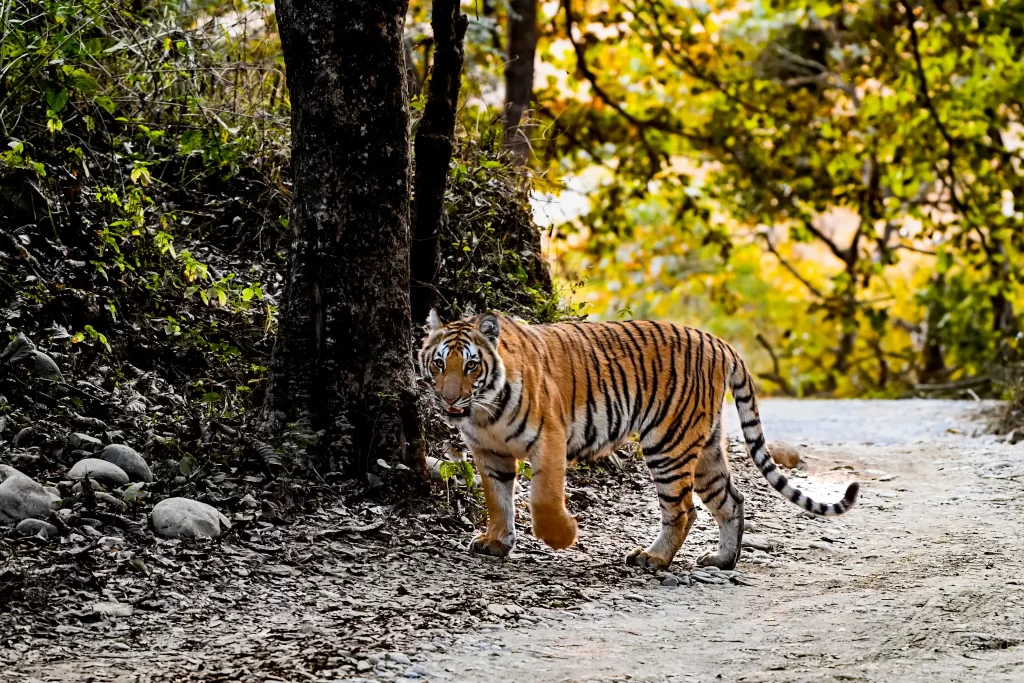
Is the Sitabani, Dhela, or the Phato zone better? The Jim Corbett National Park Safari has eight zones that convey their own uniqueness. But does it matter which zone is picked? This blog will give you an idea of what every Corbett safari zone is all about, which will help enhance your adventure at the national park. The Tiger Safari Zones We Didn’t Know Jim Had! Yes, it is possible to explore, experience, and enjoy the best safari in Jim Corbett because there are eight zones. These zones are: Zone Name About the Zone 1 Dhikala The best above the rest of the Jim Corbett zones! So, you will get to see the wild boar, Hog Deer, or well, the tiger, and other wild animals. 2 Bijrani Witness the Royal Bengal Tiger and other wildlife sightings, along with the peaceful beauty of nature. 3 Jhirna Tigers, yes, but also wild bears, and bird species that you rarely get to see in the city. 4 Garjiya The Garjiya or Ringora zone is a recently opened zone, and has remarkable views to offer with breathtaking landscape scenery. 5 Sitabani A buzzer zone that offers a place to worship and also walk through a dense forest. Oh, and around 600 bird species! 6 Phato This zone does offer wildlife; however, the tourists cannot help but admire the beauty of nature here. 7 Dhela Prepare to see several types of trees, such as the Haldu, the Sal, and more. The wildlife here loves to enjoy dips in the water bodies around. 8 Durga Devi Two rivers come together: Ramganga and Mandal, and it’s a mesmerising sight. Safari lovers will fall deeper in love with animal sightings, including the Mahaveer fish in the river streams. 8 Gateways to Jim Corbett Safari Zones What are the timings for all these amazing tiger safari zones? 1. Dhikala Zone: Best for Overnight Safari Adventures The Dhikala zone is open from 15th November to 15th June, remains shut during the monsoon, and is purely for overnight visits. The Canter Booking Safari costs Rs 2500 per seat for Indians. The booking cost for foreigners is Rs 5000 per seat. Jeep safaris are not available, so be sure to hire a private jeep driver along with a naturalist to take them through the safari. 2. Bijrani Zone: Ideal for Tiger Sightings You can get a day visit at the booking price of Rs 7500 per jeep (Indian), and Rs 16000 per jeep (foreigners). Take a morning safari of about 3 hours or an evening one for 2.5 hours during the winter season. The summer season will have you wake up an hour earlier from 6.00 am to 9.30 am, while the evening safari tour is from 3.00 pm to 6.30 pm. 3. Jhirna Zone: Year-Round Wildlife Exploration Open throughout the year, the exploration time here takes three hours and thirty minutes. Last-minute bookings might be a safer bet during the monsoon season. Bookings done in advance usually face cancellations due to heavy rains. 4. Garjiya: Scenic Beauty for Peak Season Here’s a fun fact about Garjiya! It is a zone especially open to those who are unable to get a safari booking during peak season. 5. Sitabani: Birdwatching and Nature Walks This buffer is also open throughout the year, where you can visit places of worship and also go for walks and admire nature. 6. Phato: A Wildlife Wonderland The Jeep Safari Jim Corbett has to offer in the Phato zone is a wonderland of wildlife. Here, 50 jeeps are allowed per day with morning and evening safaris for 3 hours each. 7. Dhela: Flora and Fauna This zone is open to visits all through the year as long as you are open to a 3-hour tiger safari. 8. Durga Devi: Exotic Birds and Rivers The Durga Devi zone is home to several exotic birds, and not to miss out on animals like the Royal Bengal Tiger, Black-Faced Monkey, Jackal, etc. The safari here takes place for 3 hours and 30 minutes, offering day safaris across 11 jeeps per day. November to February are the best times to take on the Jim Corbett National Park safari adventure. However, if you are not a winter person and rather prefer the summer time, book your trip between March and June. Factors to Consider When Choosing a Safari As we mentioned earlier, the Jim Corbett National Park Safari offers 8 zones that bring their own uniqueness to the table. So, which one tiger safari zones to choose and which one to probably go for in another season? The Dhikala-Bijrani Tiger Safari Zone is the perfect choice if you want to go for an overnight stay with family or friends. Here, you can stay overnight, plus this is a popular zone among others. Make no mistake, every zone gives you the best safari in Jim Corbett, and you will get to see tigers. However, every zone is different from the other, such as the Sitabani zone, where you can walk through a dense forest, witnessing animals and birds altogether. So, whichever zone you book, make sure you are considering what you want to explore. Is it the birds? Then go for either of the Jim Corbett zones: Durga Devi, Sitabani, or Jhirna. If you want to just go for a day visit, then book any of the zones except for the Dhikala zone. Tips for planning your trip to the Jim Corbett National Park Safari So, which of the eight zones would you pick to explore the Jim Corbett National Park Safari? The adventure should always go on, so in that case, book one every year with either friends or family.
Plan Your Bandhavgarh Tiger Safari: A Wildlife Journey Awaits
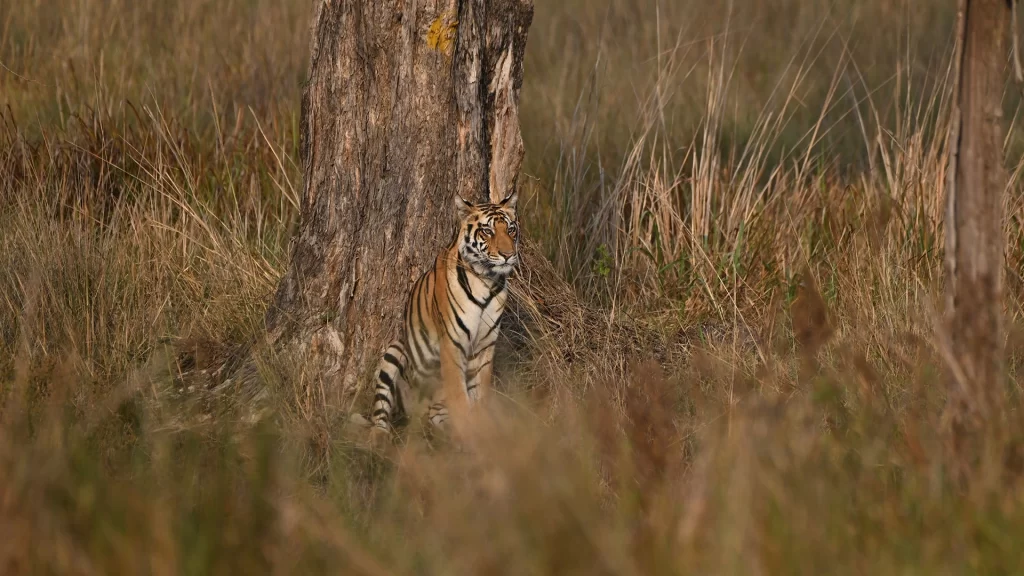
Words cannot describe the exciting thrill and fear of witnessing a tiger in real life during Bandhavgarh Tiger Safari. Expect this when you put on your safari suit to go on a wildlife expedition at the Bandhavgarh National Park. But why is this amazing wildlife in Madhya Pradesh one of the most sought-after destinations for a tiger safari? Why Bandhavgarh is India’s Best Place for Tiger Sightings Common folklore associates spotting a tiger with good luck, also representing courage and protection. It’s no wonder that seeing one is something to look forward to in a bandhavgarh tiger safari. However, you must know that tigers do not always roam about where you can see them instantly. Tigers prefer avoiding humans as they are shy, and most often avoidant of our kind. So, you need to be patient enough to wait for a long time until the wild beast decides to pop out of the woods. This makes it all the more challenging for bandhavgarh tiger safaris to go as planned, with the expectation of spotting a tiger or two in close view. Home to the Highest Tiger Density in the World That said, when it comes to the Bandhavgarh Tiger Reserve, you are bound to spot a tiger. This park is known for housing the highest density of tiger population in India and the world. There are officially close to 165 tigers in the whole of Bandhavgarh. Furthermore, the safari area has about 40 tigers. This area of the Bandhavgarh Tiger Reserve spans approximately 105 sq km with a buffer area of about 400 sq km. Imagine being able to enjoy the regal gait of Tigers across this vast tropical forest of wildlife wonder! Wildlife in Bandhavgarh National Park: More Than Just Tigers Those who have seen tigers in their Bandhavgarh jungle safari narrate their experiences as the most amazing of all. These magnificently beautiful creatures are a sight for sore eyes, especially while one takes in the beauty of a tropical forest throughout the day. Remember, it is not just the final sight of a tiger but the entire journey of the safari that makes all the difference. One of the travellers to this national park, Anuv Jain from Delhi, said, “Seeing a tiger up close was one of the rarest experiences I never thought I would have. The safari guides did a great job of making sure my family and I caught one of the tigers in sight at the right time. We waited for nearly two hours until a tiger was seen nearby. We were all so quiet so as not to scare it away. It walked past us; we were just a foot away.” Another tourist, Hymansi Babu from Chennai, was fascinated as well, “My 9-year-old daughter read about tigers in her school book. The book had limited pictures, but seeing one in real life during our jungle safari in Bandhavgarh made her extremely thrilled and excited. She even bragged about it in school with her teachers and classmates.” Beyond Tigers: Biodiversity and Scenic Beauty There is no doubt that the Bandhavgarh National Park is a beautiful landscape of diverse flora and fauna. You can view its grasslands and hills as soon as you enter this park during your Bandhavgarh tiger safari. You will have the national park guides telling you about the Sal and Bamboo species available here, from which various combinations harbour the land. Furthermore, the Sal Forest consists of various flora that serve in sustainable human well-being and, more importantly, ecological stability. They include species such as Bhirra, Palas, Saja, Tendu, Dhauda, Arjun, and Salai. Spot Chitals, Langurs, Jackals & Over 250 Bird Species When it comes to the creatures of the woods, you will find them in plenty. From monkeys, wild boars and Chitals to 80 species of butterflies, and 37 species of mammals. During your Bandhavgarh Tiger Safari, You may also spot chital, langurs, nilgai, chausingha, muntjac, and jackals. Among the 250 species of birds, you may catch a glimpse of the Indian Pitta, Shikra, Paradise Flycatcher, Long-billed Vulture, and the White backed Shama, among other birds. These are mostly visible in winter from October to December. Cultural History and Conservation Legacy of Bandhavgarh Tiger Safari Bandhav means Brother, while Garh translates to Fort. According to the great epic, Ramayana, Rama had gifted this land to his younger brother, Lakshmana, after the battle of Lanka. The fort is on the Bandhavgarh hill. It has man-made caves that have rock paintings and inscriptions on them. History points out that local rulers lived in this fort before it gradually became desolate after the capital was moved to Rewa. Over time, this forest was used as a hunting reserve where maharajas, unfortunately, killed hundreds of tigers. Later, in 1968, Maharaja Martand Singh of Rewa suggested designating 105 sq km of the area as a national park. This establishment helped control poaching. With the safety measures taken, the wildlife population increased significantly. This further enlarged the Bandhavgarh National Park’s size to 448 sq km. Also, Project Tiger in 1933 expanded its influence, encompassing an area of 694 sq km with a buffer area of 437 sq km. The number of tigers rose while the Bandhavgarh Tiger Reserve was officially established for the entirety of its region. Bandhavgarh Safari Booking: Tips for Your Tiger Adventure Not done your Bandhavgarh National Park Safari booking yet? Before you do, here are a few tips to help you prepare for this adventure. Book your trip at least four months as jeep access is limited for these safaris. Schedule your visit between October to June when the park opens. For officially entering the Bandhavgarh park, you will be asked to show the same ID you used while booking this Bandhavgarh tiger safari online. Have plenty of water, use sunscreen, wear a safari hat, and use sunglasses if you are visiting the national park during the summer season. During the winter season, wear woollen clothing. Wear neutral shades over bright colours

